Ray-esque | Sandip Ray’s Feluda film Hatyapuri to crown Christmas season
Ray-esque | Sandip Ray’s Feluda film Hatyapuri to crown Christmas season
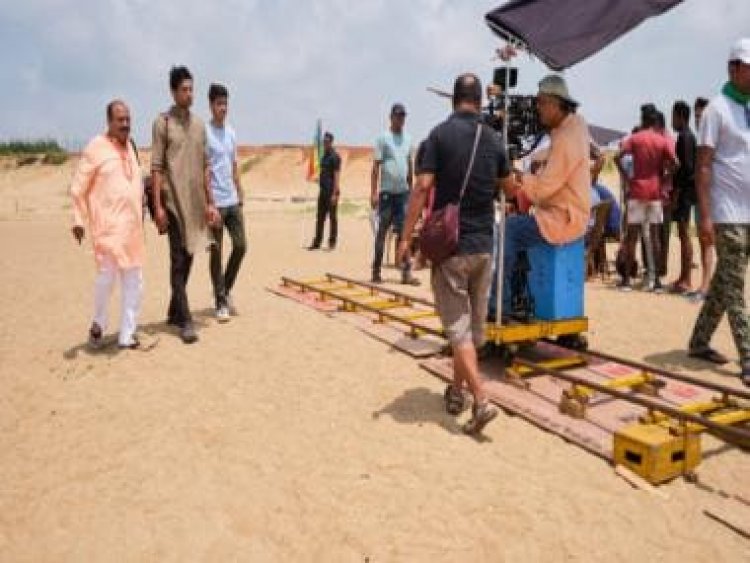
The great Satyajit Ray’s iconic literary sleuth, Feluda, is back. Ray’s son, Sandip Ray is all poised to unfurl his cinematic Feluda creation, Hatyapuri (House of Death) on big screens on December 23rd virtually on Christmas eve.
“We had originally planned to make a film from father’s literary creations in his Centenary Year which was in 2021. Father would have completed a hundred years in May 2021. But, a movie project in his Centennial year was scuppered by the Pandemic,” rues Sandip. “The last time a Feluda film emerged from the Ray household was in 2016. A Professor Shanku (Satyajit Ray’s literary scientist) film had released in theatres in 2019. Since the pre-production exercise for a Shanku movie took up a good deal of time and effort, by the time it had done its run at the movie halls, the Pandemic exploded,” expresses.
Then, obviously, a hiatus ensued for two years or more. As Covid ebbed, Sandip began jogging his brains over a movie project again. “We had initially contemplated coming up with a film which would see a Professor Shanku novel in the first half of the movie and a Feluda novella or novelette (shorter than a novel) in the second half after the interval. This was the thought for father’s Centenary Year. However, everything fell through because of Covid,” informs Sandip.
But, after this sudden drought of films, as things began looking up, Sandip decided that it made sense to go with a full-length Feluda film. “I had jotted down a rough list of Feluda stories which could be turned into films. One needs to keep the budget in mind too. Since father had authored Feluda plots which revolved around locales which were distant from Kolkata. The logistics change entirely if one is required to travel distances. In turn, impacting the budget,” Sandip emphases.
Sandip goes on to explain that the OTT platform became very popular in the Pandemic. People wouldn’t venture out to view films at theatres. Thus, the budgeting of a film turned even more critical. “Even after the Pandemic has ebbed, one notices a section of the populace wearing masks and taking protective measures. Thus, both producers and film makers have become very sensitive about a movie’s budget. Therefore, after poring over my list of filmable Feluda films, I found Puri (the famous sea resort where Hatyapuri unfolds) to be the nearest to Calcutta and most cost-effective,” underlines Sandip.
For a while, Sandip dwells on Puri as being the favourite holiday haunt of Satyajit Ray. Ray would journey to this town every year and check in at the BNR Hotel, as it was known those days. “Together with Darjeeling, which nestles in the Himalayas, and to a lesser extent, Gopalpur on Seas, father was unflinchingly fond of getting away to Puri yearly. He not only penned film scripts and stories at the BNR Hotel, but took long walks on the sea beach and came up with a host of ideas. It was therapeutic for an intellectual like him. On one such occasion, he walked up to the Nuliah (fishermen’s) dwellings and discovered a dilapidated house which made an impact on him. This rundown house spurred the thought in his mind to write Hatyapuri. Of course, that house doesn’t exist anymore. We had to put up a simulated set in a Calcutta studio and execute the indoor shooting there,” Sandip says.
This Feluda novel is a favourite of Sandip because Puri evokes a pronounced tinge of personal nostalgia. He had been travelling to Puri with his famed parents ever since he was a toddler. Besides, Hatyapuri is sprinkled with several interesting characters and intrigue. “But, it is a complex novel,” drives home Sandip. “The story not only calls for a concentrated read, the film needs to be viewed with equal degree of cerebral and intellectual alertness. Otherwise, one will be led to miss out on various facets,” stresses Sandip.
Sandip says he has returned to the ‘Whodunit’ format with this film. The earlier Feludas he had dabbled in centred on the ‘thriller’ matrix where audiences had unravelled the culprits at the outset of the film. Even, the legendary Satyajit Ray had stuck to the ‘thriller’ pattern when had set out to fashion his two unforgettable Feluda movies, Sonar Kella (The Golden Fortress) and Joy Baba Felunath (Elephant God). In case of Hatyapuri, viewers will be left to imagine who the villains could be and for Feluda to get to the bottom of the case and fathom the mystery.
“These elements matter to me a great deal. After making a few thrillers, friends and those who are our die-hard movie viewers, urged me to return to the ‘Whodunit’ format. Father would opine that in the thriller style of films, the protagonist is required to explain the crux of the story and the manner in which he had gone about solving the plot at the end of the film. Consequently, the film’s climax slides to an extent,” expresses Sandip.
Ray’s son observes that the town of Puri of the seventies has changed in 2022. For that matter, Kolkata had transformed dramatically from those times. “This has led us to contemporise the story to some extent. Of course, we always had to resort to these changes with the Feluda films. But, that doesn’t imply that we have indulged in any major alterations which will disturb the plot. One must also keep in mind that one is transcreating a literary medium into a film. Obviously, therefore, we were required to certain adjustments. But, nothing that weighed on the flow of father’s writing,” explains Sandip.
But, this time around, Satyajit Ray’s son felt that Feluda should use a mobile phone. Otherwise, the younger generation was failing to identify with Ray’s famed literary sleuth. “But, I established the use of the mobile by Feluda extremely discreetly. It’s not that Feluda is always carrying a mobile phone. He’s only using it when the need arises. In fact, Topshe, Feluda’s nephew and assistant, has also been handed a mobile phone,” Sandip informs. Incidentally, Hatyapuri was written by Satyajit Ray in 1979.
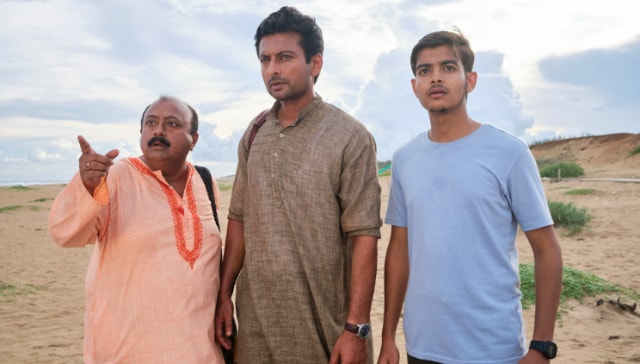
Moving on to the prime cast of the film, Sandip says Indraneil Sengupta, who is playing Feluda, had dropped at the Ray household quite a while back and had expressed his interest to act out in Feluda’s character if Ray’s son was keen on slotting him in the role. “This is around the time when I was making Double Feluda with Sabyasachi Chakraborty who was bringing off the Feluda roles. Indraneil told me that he had no intention of disturbing the cast at that time, but left word with me that he was in the queue if I decided to go for a fresh actor as Feluda in future,” says Sandip.

To complete Satyajit Ray’s famous triumvirate of Feluda, Topshe and Lalmohan Ganguly (the author of thriller stories who doesn’t fail to add that dash of humour), Sandip has gone for Ayush Das as Topshe and director-actor Abhijit Guha who will be seen playing out Lalmohan Ganguly. Ayush had acted in an earlier film directed by Sandip, while Abhijit’s casting was suggested by Lolita Ray, Sandip’s wife. Together with these prime three, the cast includes others like Paran Bandopadhyay and Subhashish Mukhopadhyay who have played in previous Sandip Ray films. Even Saheb Chattopadhyay, who acted in Sandip’s Hitlist is back. Sandip had also put Saheb to use as a playback singer in his 1992 film, Goopy Bagha Phire Elo (The Return of Goopy and Bagha). Goopy Bagha Phire Elo was not only scripted by Satyajit Ray, but Ray had also scored the background music. Hatyapuri will also witness a pick of actors from the realm of Bengali TV serials and theatre. “Actors drop by off and on to leave their photographs with me. I preserve them meticulously and go back to them to decide if any of these faces can fit into a film. Hayapuri will also see two or three actors from TV serials and the theatre world. “Hopefully, viewers will accept the freshly cast trio of Indraneil Sengupta, Abhijit Guha and Ayush Das,” says Sandip expectantly.
The film has spanned across two schedules embracing Kolkata and Puri. Both together, Sandip’s movie shooting has spread over around twenty-eight days. Hatyapuri, by the way, has been produced by Ghoshal Media and Entertainment led by the US-based Anjan Ghoshal and co-produced by Shadow Films.
Sandip describes the performances of the actors during production as “satisfying”. “I had advised them, especially Indraneil, not to imitate the previous actors who had played Feluda, like Sabyasachi Chakraborty or (the late) Soumitra Chatterjee. You could have watched their Feluda films, but don’t view them any further, I counselled Indraneil. Mannerisms of the earlier actors invariably tend to creep in. Revisiting the films ends up triggering a hangover and an overload of ideas. My suggestion was that the principal three characters leaf through the book and screenplay very attentively. They have done exactly that and I feel they have delivered. In any case, I don’t let go off the actors till they perform to my satisfaction. Now, whether a film, any movie production for that matter, works with the audiences is ultimately always a grey area till it releases and runs at theatres,” confesses Sandip.
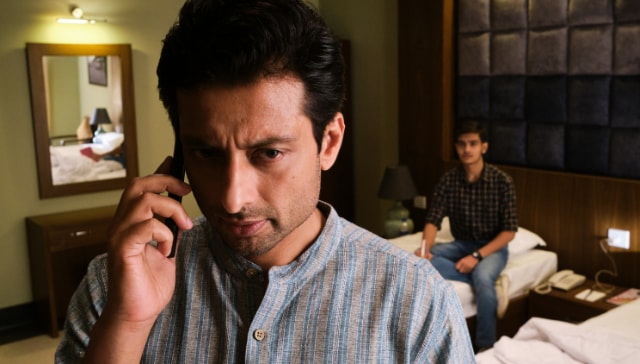
Hatyapuri is laced with both day and night sequences. So, according to Sandip, it was a very “hectic shoot”. “We often shot till late into the night to complete the shooting within the schedule. We travelled to Puri in peak monsoon season. But, very fortunately, the rains did not come in our way. Shooting was very smooth. There was no hitch. Of course, shooting indoors within the studio in Kolkata was under controlled conditions. There, there was no question of the weather playing pranks,” comments Sandip.
It happens that Hatyapuri was one of Satyajit Ray’s favourite Feluda writings. Without going into extensive details, Sandip says that his legendary father “was extremely satisfied writing the novel”. “The fact that father was fond of Hatyapuri made me even more cautious and careful about not disturbing the matrix of the novel. Father had weaved into Hatyapuri his haunts in Puri like the bazaar, BNR Hotel and, of course, the sea beach to which he was he was very attached,” observes Sandip.
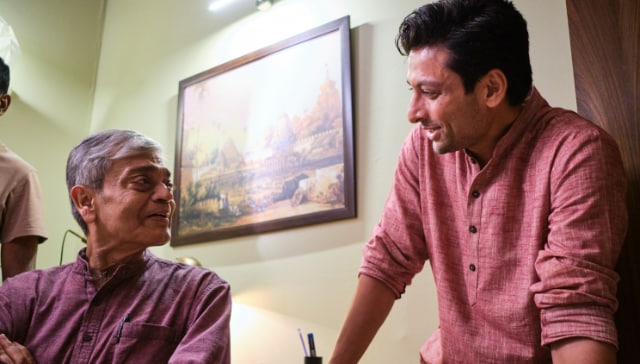
Satyajit Ray had not contemplated making another Feluda immediately after Sonar Kella and Joy Baba Felunath. “At least, he hadn’t expressed anything of that nature to me. Besides, as a film maker, he believed in a variety of genres and subjects which he turned into films. Then, after Santosh Datta passed away, father completely switched off the thought of making another Feluda. Subsequently, father also fell ill after his two massive heart attacks,” underscores Sandip. “So, there was no question of father’s undertaking the strenuous schedule of filming a Feluda story.” Everyone who has watched the maestro’s two Feluda films, will unfalteringly agree that Santosh Datta had lived the character of Lalmohan Ganguly in the two Feludas that Ray filmed.
Tracing back a little, the master had written Feludar Goendagiri (Danger in Darjeeling), planning it as a one-off tale. But, he was overwhelmed by the response from young and adult readers. Thus, emanated a series of Feluda stories. “Father had actually felt that there was a vacuum of a detective character for young readers. It’s another matter that father’s writings are multi-layered and appeal to both young and grown-up readers,” explains Sandip. Sandip is, of course, fond of both Ray’s prime literary characters Professor Shanku, which Ray created to begin with in 1961 and Feluda who followed in 1965. They are both alter egos of Sayajit Ray.
Sandip has created several Feludas for the small screen in shape of television series. In 1995, he had mulled making a telefilm based on Satyajit Ray’s Feluda novel Baksha Rahasya (Incident on the Kalka Mail). But, there were no takers for telefilms at the time. In fact, no producer was interested in backing a Feluda novel for the big screen. 1995, incidentally, was the 30th anniversary of Feluda’s literary creation by Satyajit Ray. “A producer agreed to back Baksha Rahasya as a TV series. We came up with idea of a five-part series. But, the producer said we would need to go for a long-drawn TV series which was the convention in those days. We had no other option. But, before embarking on the TV serial, we made arrangements to screen the telefilm Baksha Rahasya digitally in the Nandan 2 auditorium. (Nandan is Calcutta’s cultural complex). The screenings were a super success with all the shows running to full house. We are a pioneer in that sense,” says Sandip emphatically. Baksha Rahasya, the telefilm was produced by Satyajit Ray Productions and Chhayabani Films. Baksha Rahasya’s cast had seen Sabyasachi Chakraborty, the renowned late actor Rabi Ghosh and Saswata Chatterjee. “Of course, we had to rope in another producer to telecast Baksha Rahasya as a television serial. But, the telefilm’s bumper hit at Nandan was a trial for us,” stresses Sandip. “Even so, no producer stepped forward to finance a Feluda novel for the big screen,” rues Sandip.
In time, telefilms arrived. Sandip made the Feluda telefilm Dr Munshir Diary (Dr Munshi’s Diary ) and a mini series based on Satyajitir Priyo Galpo (Satyajit’s Favourite Stories). These two were for Ramoji Rao’s ETV. The feedback for both the telefilm and the mini series was very positive. “I was never interested in the endless format of TV serials. Then, finally, came the offer from Ramoji for a feature film revolving around Feluda. I decided to turn Bombayer Bombete (The Bandits of Bombay) into a feature,” recollects Sandip.
This was in 2002. The movie released in 2003. The film industry in Tollygunge was circumspect. How, they wondered, would a movie devoid of songs, heroines and romance work at the box office. However, the film proved Tollygunge pundits wrong. Bombayer Bombete was a smash hit. In fact, arguably, Sandip could have opened the doors in Bengal for a stream of detective films. There was no dearth of producers for Sandip to make feature films after that. In fact, producers were lining up with contracts for two to three films. “But, they requested me to include at least one Feluda in the production list,” exudes Sandip.
Hatyapuri will see quite bit of merchandising hovering around bookmarks, mugs, T-shirts and notebooks and the like, both pre-release and post-release. Together with Kolkata, the film is also slated to release in the main cities in India and witness special shows abroad. “An endeavour is also afoot to release the film commercially in theatres in the US,” informs Sandip.
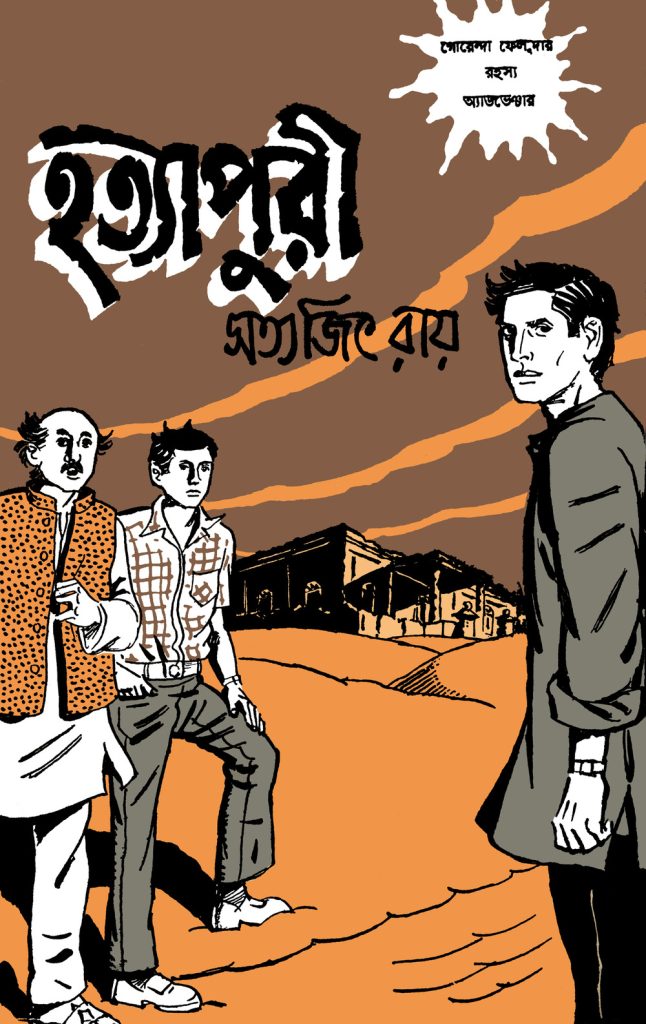
“It’s almost forty years since I started making films. But, still feel a trifle tense before the release of a film. In the same breath, Feluda paved the way for me to enter feature films afresh. In that sense, I am unshakably indebted to Feluda,” drives home Sandip.
Ashoke Nag is a veteran writer on art and culture with a special interest in legendary filmmaker Satyajit Ray.
Read all the Latest News, Trending News, Cricket News, Bollywood News, India News and Entertainment News here. Follow us on Facebook, Twitter and Instagram.
What's Your Reaction?



























































